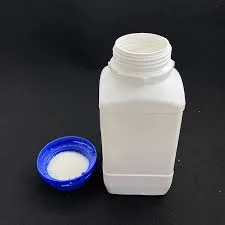Fillers and Additives in Plastics Enhancing Performance and Versatility
The world of plastics is incredibly diverse, encompassing a wide range of materials tailored for specific applications. Central to this versatility are fillers and additives, which play a crucial role in enhancing the properties of plastics. These materials not only improve performance but also allow for cost-effective production and greater sustainability. In this article, we will explore the types of fillers and additives used in plastics, their functions, and their impact on the industry.
Understanding Fillers and Additives
Fillers are inert substances added to plastics to modify their physical properties, reduce costs, and improve performance. Common types of fillers include mineral fillers (like talc and calcium carbonate), glass fibers, and organic fillers. These substances can enhance the mechanical strength, thermal stability, or chemical resistance of plastic materials. For instance, adding glass fibers can significantly increase the tensile strength and rigidity of polymers, making them suitable for structural applications in automotive and construction industries.
Additives, on the other hand, are substances incorporated into plastics to impart specific functionalities. They can be categorized into various types, including
1. Stabilizers These help protect plastic from degradation caused by heat, light, or chemical exposure. Examples include UV stabilizers, which prevent discoloration and loss of mechanical properties due to ultraviolet radiation.
2. Plasticizers These are added to increase flexibility and workability. Plasticizers, such as phthalates, make rigid plastics more pliable, facilitating their use in applications like films and coatings.
3. Flame Retardants Essential for applications where fire safety is a concern, flame retardants limit the spread of flames and reduce smoke generation. This is particularly important in electronics, furnishings, and transportation sectors.
4. Colorants Dyes and pigments are added to achieve desired colors and aesthetics in plastics. They can also provide additional benefits, such as improved UV resistance.
5. Antioxidants and Biocides Antioxidants extend the lifespan of plastics by preventing polymer degradation during processing and use, while biocides help inhibit microbial growth on plastic surfaces.
fillers and additives in plastic

Benefits of Using Fillers and Additives
The incorporation of fillers and additives in plastic formulations presents numerous advantages. Primarily, they allow manufacturers to reduce costs by replacing a portion of the expensive polymer resin with less costly filler materials. This is particularly beneficial in commodity plastics, where price competitiveness is crucial.
Furthermore, fillers can modify properties such as density, thermal conductivity, and thermal expansion, leading to enhanced application performance. For example, plastics with added mineral fillers often demonstrate improved dimensional stability and reduced thermal expansion, making them ideal for precision applications.
Sustainability is another significant advantage. Many fillers are derived from abundant natural resources, and the use of recycled materials as fillers is becoming increasingly popular. This not only reduces reliance on virgin plastics but also aids in minimizing environmental impacts. Additionally, incorporating additives that enhance the biodegradability of plastics is a growing area of research aimed at addressing the plastic pollution crisis.
Challenges and Considerations
Despite their benefits, the use of fillers and additives is not without challenges. The selection of appropriate fillers requires careful consideration of compatibility with the polymer matrix, as well as potential impacts on processing and end-use properties. For instance, excessive filler loading can compromise the mechanical properties of the final product, necessitating a balance between cost reduction and performance maintenance.
Moreover, regulatory concerns surrounding certain additives, particularly phthalates in plasticizers and specific flame retardants, are leading to stricter oversight. This necessitates ongoing research and development aimed at finding safer and more sustainable alternatives.
Conclusion
Fillers and additives play an integral role in the plastics industry, significantly enhancing material properties and enabling a wide range of applications. As the industry continues to evolve, the demand for innovative, cost-effective, and sustainable solutions will drive further advancements in the formulation of plastics. By leveraging the benefits of fillers and additives, manufacturers can not only improve their products but also contribute to a more sustainable future in materials science.

